Qiu Xiaofei is best known for his evocatively colored paintings that fuse intuitive and playful forms. Using memory, allegory, and a dreamlike narrative, he draws on both Eastern and Western aesthetics across generations. Qiu perceives painting as an interplay between physical sensation and cognitive knowledge, and a call for spiritual energy to gain a deeper understanding of the world. Drawing inspiration from ancient and modern thinkers, he considers time to function like a spiral. Past, present, and future coalesce in a constant state of flux and mutual interaction. Within his works, he typically incorporates multiple temporal dimensions or layers that result in an enigmatic synthesis. Foreground and background often dissolve to create a sense of infinite and non-hierarchical space. In his continuous exploration of time, a spiral is both the source of composition and image, as well as a force that informs his style and development. Qiu’s inspirations range from personal childhood memories and his hometown Harbin, with its geographical relationship with the Soviet Union, to compositions in ancient religious art. In recent years, Qiu has started to use traditional mineral colors extensively on his canvas, resulting in an organic texture and a sense of the distant past. His dreamlike and enigmatic compositions often juxtapose abstract and representational elements, embodying the spirit of Chinese landscape painting and brushstrokes in intricate two-dimensional images.
Qiu Xiaofei is currently exhibiting at Xavier Hufkens in Europe from June 7 to August 3, 2024. Entitled “BARE,” the presentation showcases a new series of paintings created between 2021 and 2023. Referencing Eastern and Western aesthetic traditions, and drawing on the literary, musical, and intellectual worlds of both cultures, the works straddle the border between observation and imagination, exploring the depths of human consciousness and the boundaries of reality.
The title of the exhibition alludes to a famous sentence from the poem “First Day of the Year Wu Shen” by the Ming Dynasty writer Wang Zhideng (1535–1612): “Bare-skinned, I pound the drum with unrestrained fervor, unleashing my untamed soul.” The poem tells of a man who ages overnight and awakens on the first morning of the New Year naked, entering a state of mania as he fervently searches for his most authentic inner self. By conjuring the image of a naked man beating the drum, Qiu depicts this unbridled attitude to life and a desire to transcend its mundanity in his works.
Bio courtesy of Xavier Hufkens.
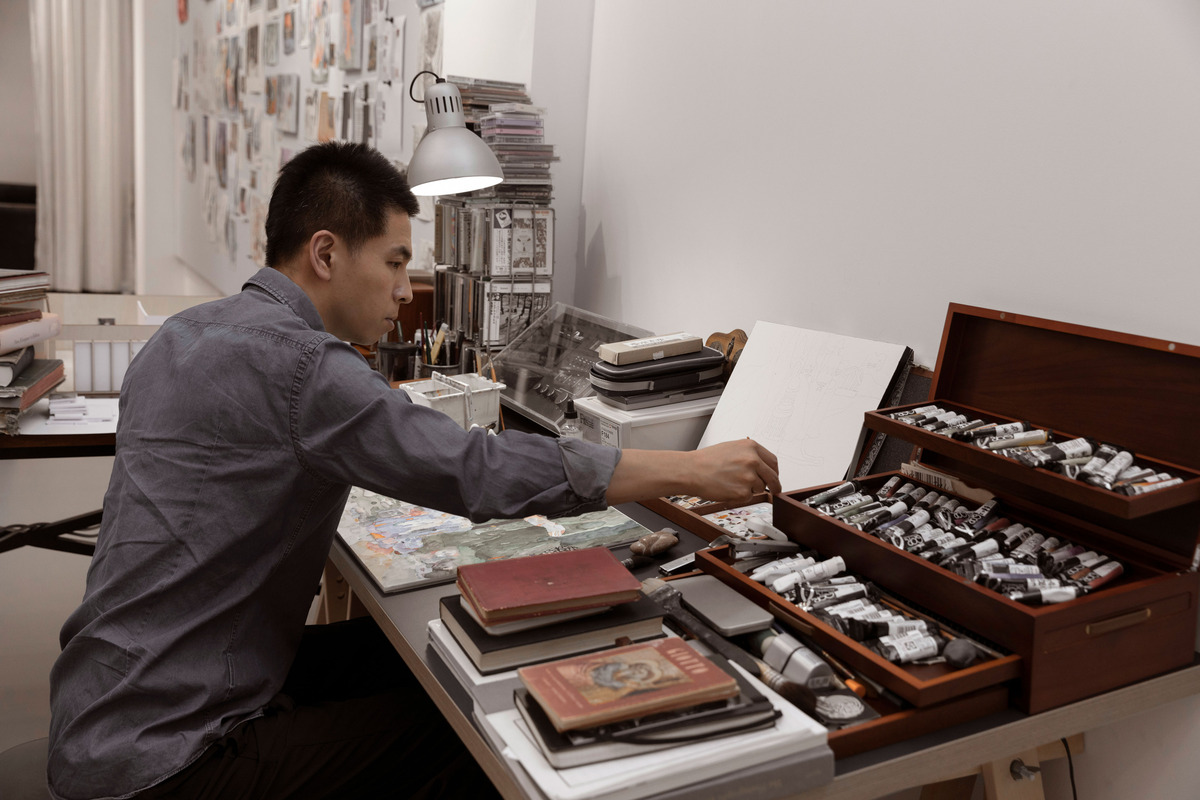
An Interview with Qiu Xiaofei
By Carol Real
Could you share how your childhood memories and your hometown, Harbin, influence the imagery and themes in your art?
Located in northeast China, Harbin is the closest major city to Russia. During the early 20th century, it rose to prominence with the construction of the Middle East Railway. In the 1950s, European expatriates such as Russians, Poles, Latvians, and Jews gradually left, but their buildings and lifestyles remained. By 1977, when I was born, there were few Eastern Europeans and Japanese in Harbin, and many Orthodox churches had been abandoned or repurposed as workers’ homes. I grew up in a neighborhood with old buildings and socialist construction sites. We frequently moved, from old Soviet-style buildings to gloomy tube-shaped apartments, and eventually to well-lit flats. Now, everything has changed. The churches have been restored and transformed into charming tourist attractions, while those well-lit flat buildings have decayed. Their connection resembles a lifecycle, filled with my personal memories and a sense of the future. These landscapes–filled with traces of religion, time, and struggle–are scattered in the background of each painting like fragments of dreams.
You mentioned that your multi-disciplinary work acts as a chronological recorder of your history. Could you elaborate on how your personal history influences your creative process?
My personal history connects with the experiences of my family, spanning generations from grandparents to parents to children. My grandfather was a playwright, and my father is an amateur painter. My artistic vision was greatly shaped by listening to their discussions on art during my childhood. Art is inspired by both life experiences and reflections on art itself. The representation of art evolves as our perception develops. Mediums such as paper, ink, oil painting, and sculpture are not merely tools; they embody historical and cultural complexity. I chose to engage with this complexity rather than abandon it. I aim to transcend the logic of postmodern art, seeking common ground among these media and liberating art from both visual and metaphysical constraints. If a painter can integrate with the world through his practice, painting will continue to hold relevance in the future. We transcend the history of painting to achieve a sense of originality. Throughout this process, the elements of history persist, and my role is to categorize and arrange them appropriately in each artwork.
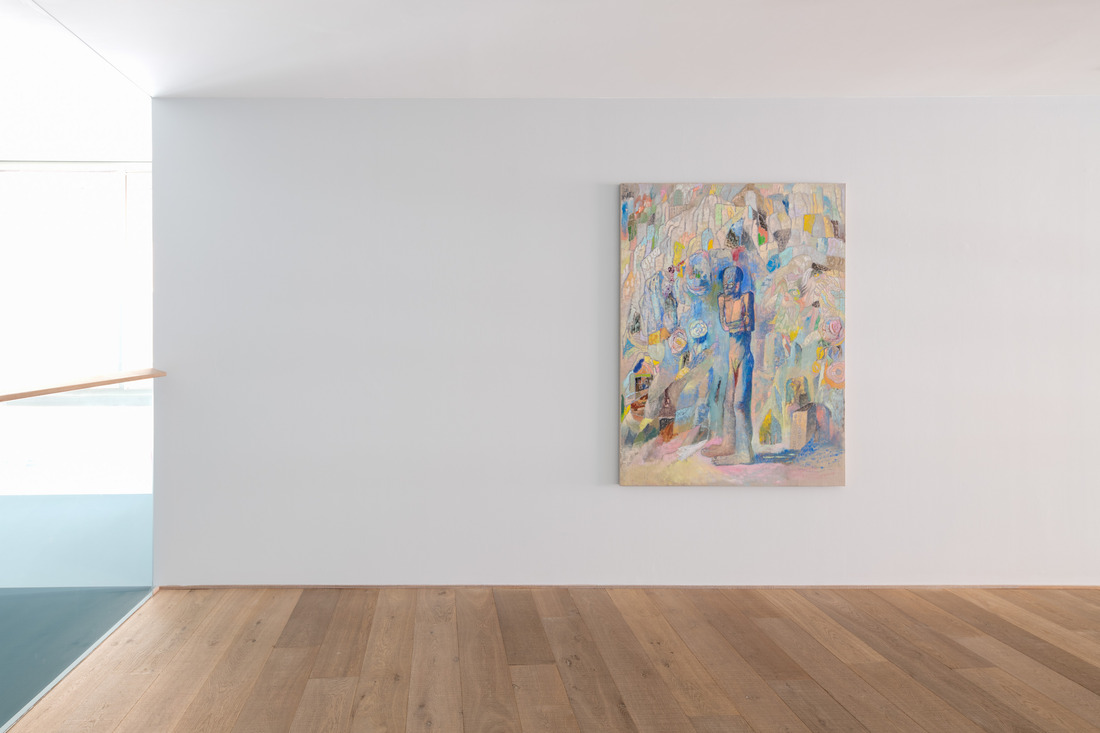
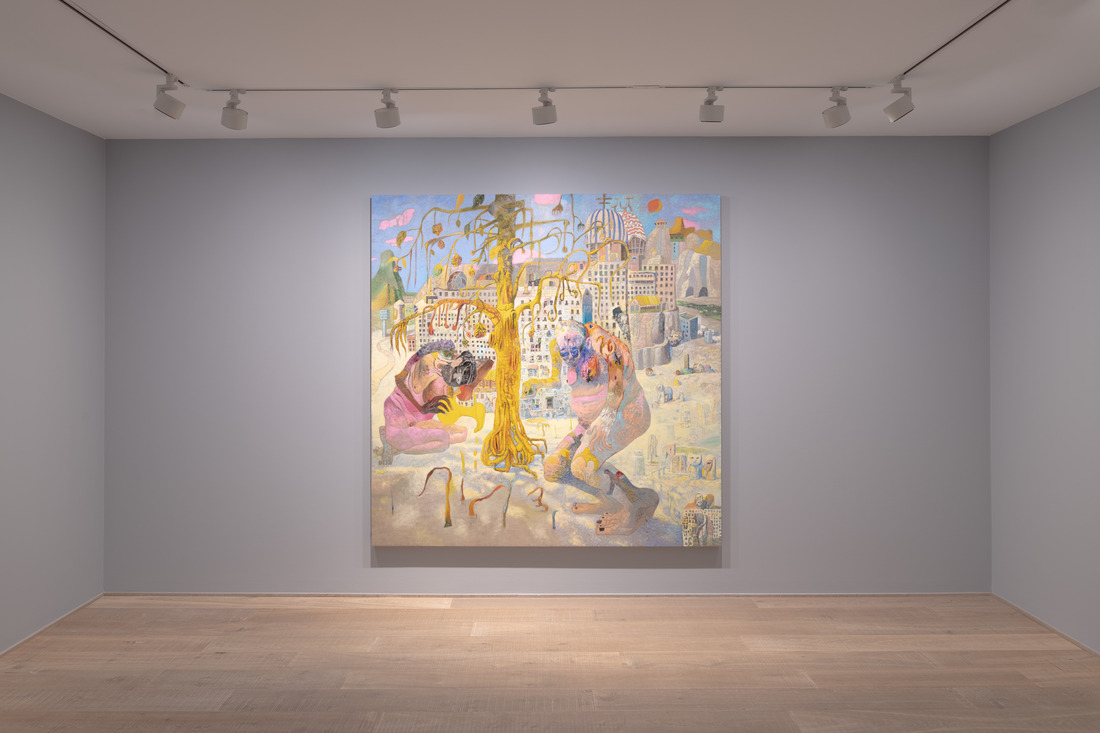
Can you describe the concept of “thought diversions” in your work and how they contribute to your exploration of subconscious and personal experiences?
My practice began with realism, focusing on my observations. My first diversion occurred when I felt constrained by an image in front of me. Subsequent diversions followed—from representation to abstraction, and then back to mental representation, following a spiral trajectory. Each step forward encompasses the past practices layered behind it.
You approach painting as an interplay between physical sensation and cognitive knowledge. How does this interplay manifest in your work, and what do you hope viewers will perceive or experience?
I feel that painting offers more and more things to me these days. In the past, I sourced inspirations from images of the real world, but now I focus more on creating things in an imaginary world. Recently, I have favored using canvases with dark backgrounds to sketch shapes and to recreate images from these forms. The process of pulling the image out of the dark background feels divine, and the image emerges like a ghost from a distance. This world gives me a sense of unfamiliarity unlike I’ve ever experienced. Painting allows me to understand the world in a way that is free from an existing framework, offering insights I have never encountered before. This awareness is closely linked to fundamental aspects of humanity, such as rationality, madness, society, and death.
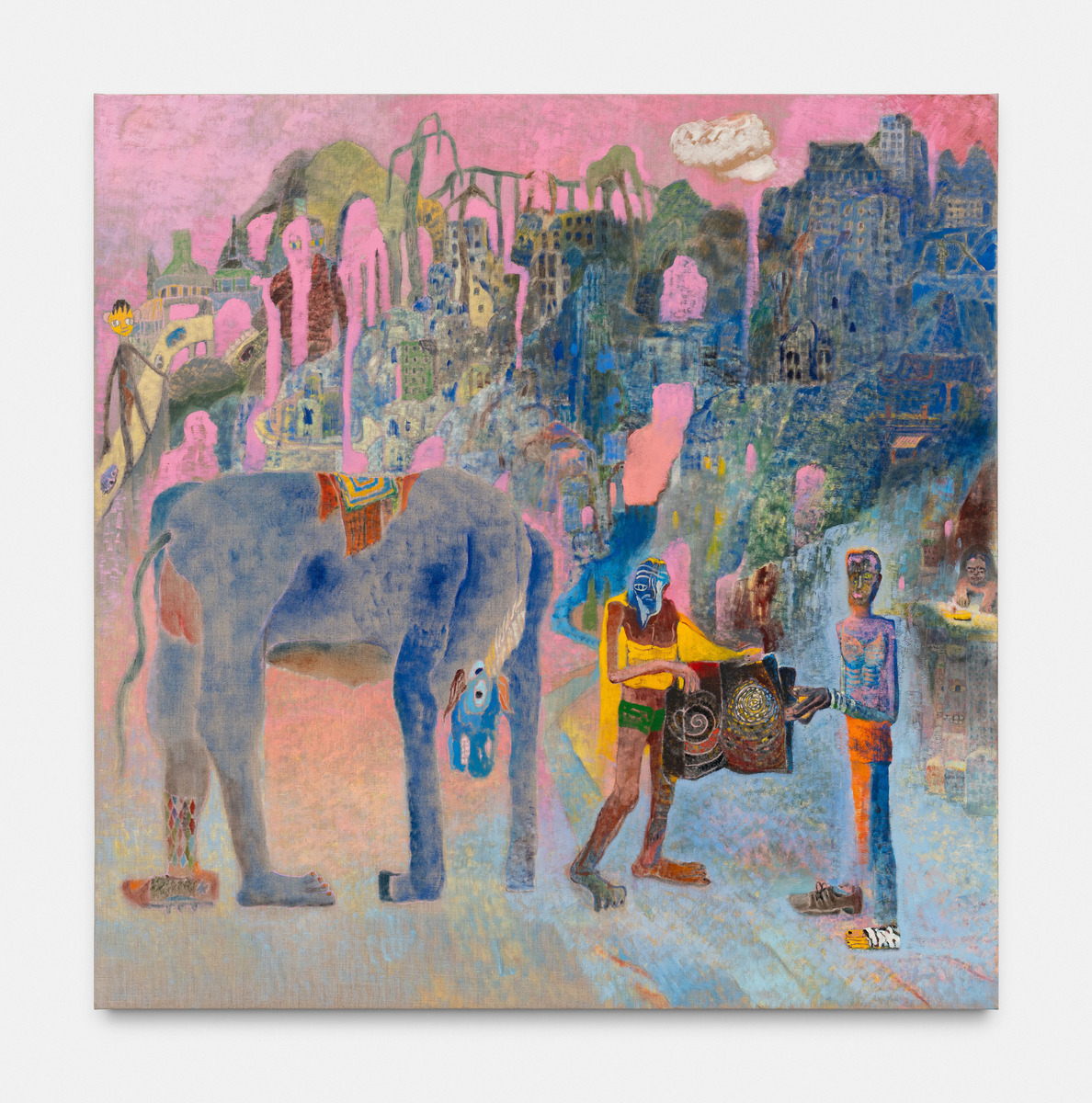
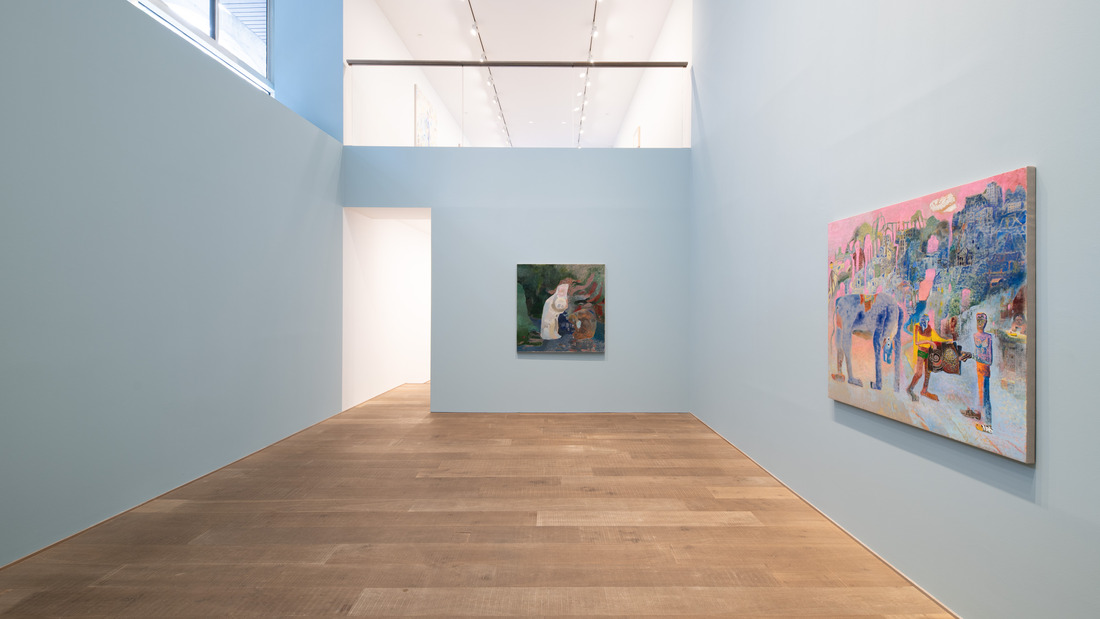
Drawing inspiration from ancient and modern thinkers, could you name a few who have had a significant impact on your artistic philosophy and approach?
Danish philosopher Søren Kierkegaard (1813-1855) once said, “Repetition and memory are the same movement, only in opposite directions. For what is being remembered has been, is repeated backwards, whereas the true repetition is recollected forward.” It’s like an upside-down train, where the front is heading backward while moving in the opposite direction. This idea is fascinating in the context of painting as I often incorporate my memory to shape an imagination of the future.
Your work has been inspired by philosophy, and the spiral motif is recurrent. Can you share your thoughts on how philosophy and art intersect in your creative process?
Painting differs significantly from a brain-computer interface, which enables connection for everyone. Without understanding the context behind a painting, experiencing the world within a painting is challenging. When we look at a masterpiece, we appreciate not just the artwork itself but also its connections to many remarkable moments in human history. I believe the role of a painter is to continuously integrate reality, fantasy, and history into layers of a painting. Just like in a chess game, it is about arranging these elements into various layers of the canvas—not merely the visible points, but also the hidden consciousness behind the game.
Can you share some insights into how you translate abstract concepts of time and memory into tangible symbols in your artwork?
Symbols and metaphors have always played a significant role in my approach. However, they lose their significance in paintings when they are linked to a fixed or rigid concept. My goal is to translate symbols back into pure imagery rather than predetermined concepts.
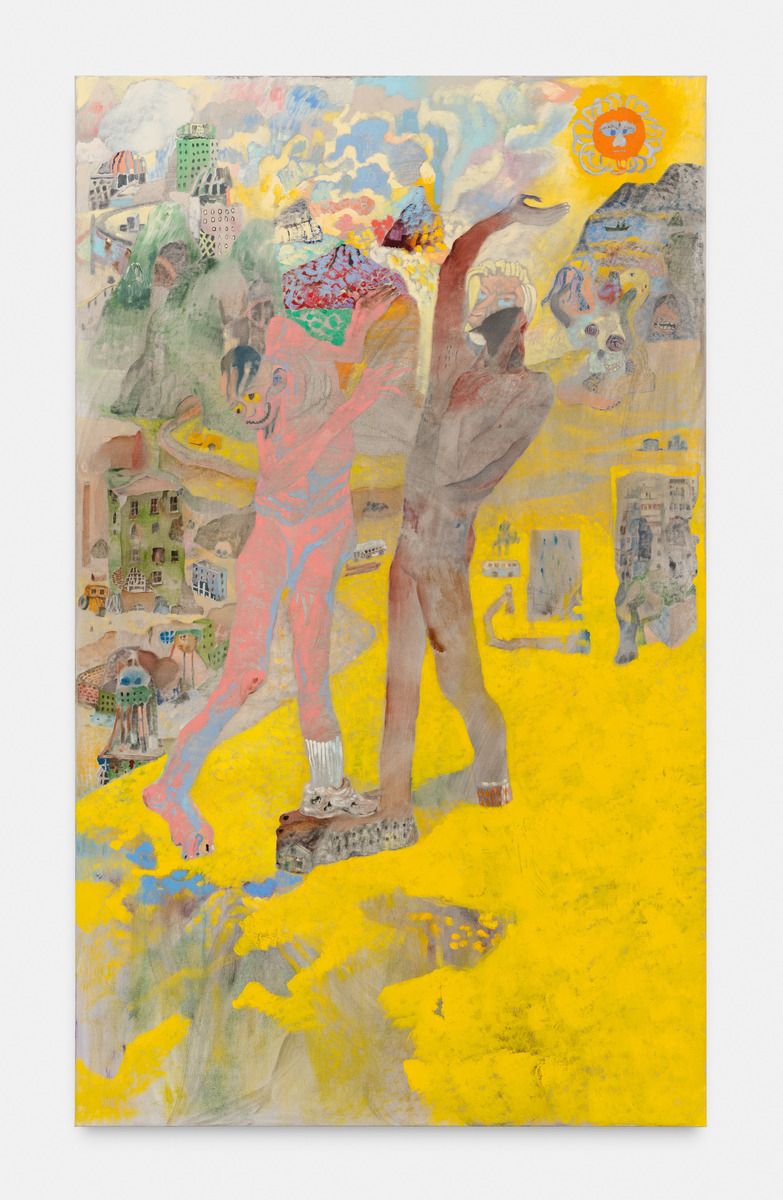
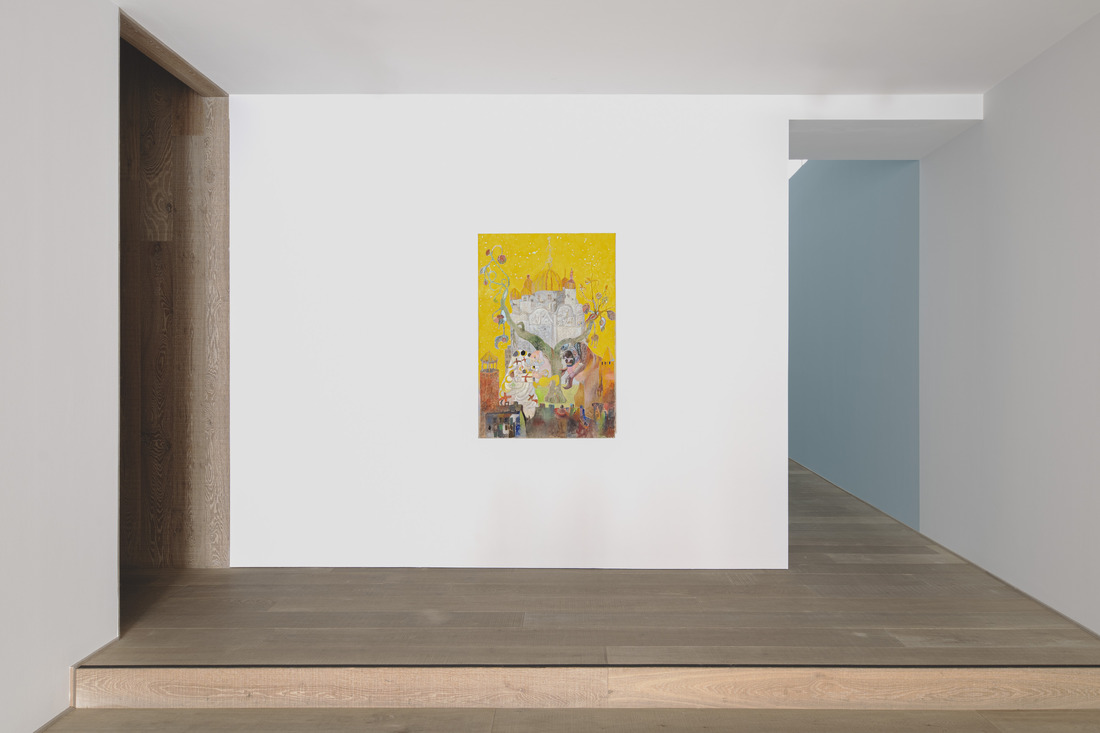
Your works such as Trotskyky grew into a tree blend reflections on your childhood and history with traditional Chinese landscape painting. How do you achieve this balance of elements?
The imagery in my paintings is inspired by my family, my beloved cats, and my cherished friends. Over the past two years, changes in family and the world made me reflect on various aspects of life, including existence and mortality. These deeply personal experiences have intensified my fascination with organic life forms. Even when portraying something as mundane as a house, I’m intrigued by the parallels between its structure and the rib cage in human anatomy. In my paintings and imagination, the house’s beam transforms into a creature that gradually evolves into a tree. Whether depicting a tree, a house, or a person, each is rendered as an organic entity, blending their identities, akin to a vast familial bond. Each painting embodies a distinct narrative that is similar to writing a novel, possessing literary elements yet highly abstract.
As an artist who challenges linear time and evokes dreamlike memories, what message or emotions do you aim for your audience to glean from your work?
I believe that paintings often reveal human frailty. Throughout history, the role of painting has gradually diminished due to advancements in science and technology, film, and photography. What remains relevant in the realm of painting? Its relation to humanity itself—marked by changeable nature, fears, and anxieties. Painting will always remain relevant since it is intertwined with human imperfections.
All images courtesy of the artist and Xavier Hufkens
Many thanks to Yehbonne Bien.
Editor: Kristen Evangelista